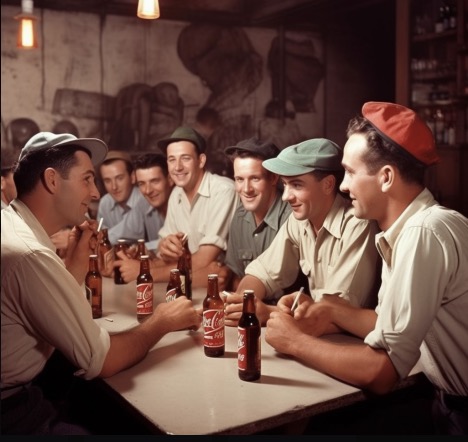In the 1950s, beer was a drink of popular choice across many parts of the world. The post-war period saw a boom in brewing industry as people craved light, refreshing and bubbly beverages. During this era, various types of beer were produced and enjoyed by the masses.
This article delves into the popular beers of the 50s, exploring their unique features and what made them a hit back then. Let’s take a nostalgic trip down memory lane and discover the beers that our fathers and grandfathers savored back in the day!
1. The dominance of Schlitz Brewing Co. in the 50s
Oh, the 50s were a time when America couldn’t get enough of beer. And leading the charge was the Joseph Schlitz Brewing Co. Based in Milwaukee, they were the biggest beer producer in the United States back then, and their brand Schlitz was nicknamed “The beer that made Milwaukee famous.”

Despite stiff competition from breweries like Budweiser and Miller, Schlitz managed to increase their market share from 7% in 1950 to an impressive 14% by 1977! It wasn’t just the taste that made Schlitz so popular, their marketing game was on point too. Remember those “Royal Ruby Red” bottles?
They were carefully chosen by Schlitz to create a visual impact on consumers. No wonder they were on top of the beer game back then. Cheers to Schlitz for giving America some of the best beers of the 50s!
2. The popularity of defunct breweries like Schmidt’s of Philadelphia and Hamms
Oh, the memories that flood back when I think of the old-school beers like Schmidt’s of Philadelphia and Hamms. These defunct breweries may no longer be producing beer, but their popularity back in the 50s was unmatched.
I remember the elegant-looking can that Schmidt’s beer came in, and the taste of the refreshing Hamms on a hot summer day. It’s a shame that these breweries couldn’t stand the test of time, but I’m grateful for the memories and the nostalgia they bring back.
3. The rise of Ballantine IPA
I absolutely love exploring the history of beer, and one of the most interesting stories is that of Ballantine IPA. As I mentioned in my previous blog section, in the 1950s Schlitz dominated the market, but Ballantine IPA made a name for itself as America’s first IPA.
:format(jpeg)/cdn.vox-cdn.com/uploads/chorus_image/image/38797048/ballantine-pale-ale-comeback.0.jpg)
I was fascinated to learn that it was aged for a full year in wood, a technique that is rarely used these days. While Ballantine IPA may not be as well-known today, it had a huge following back in its prime. I think it’s important to remember and appreciate the pioneering brewers who paved the way for the diverse and delicious craft beer scene we enjoy today.
4. The enduring popularity of Guinness, Bass, and Beck’s
I absolutely love the fact that even today, three of the most popular beers from the 1950s are still very much enjoyed across the world. Guinness, Bass, and Beck’s have all stood the test of time, and it’s not hard to see why.
Each one boasts a distinct flavor and quality that sets them apart from other beers on the market. Plus, their classic branding still appeals to consumers today, proving that a timeless design can truly make a difference.
It’s exciting to think about how these brands have maintained their popularity over the years and what the future holds for them.
The significance of Guinness, Bass, and Beck’s in the 1950s
As I was researching the popular beers of the 50s, I couldn’t help but be struck by the enduring popularity of brands like Guinness, Bass, and Beck’s.
These beers may not have been as widely consumed as some of the more mainstream American beers, but they held a special significance among those who appreciated their unique taste and heritage. Guinness, in particular, has been around for centuries and is considered by many to be the quintessential Irish beer.
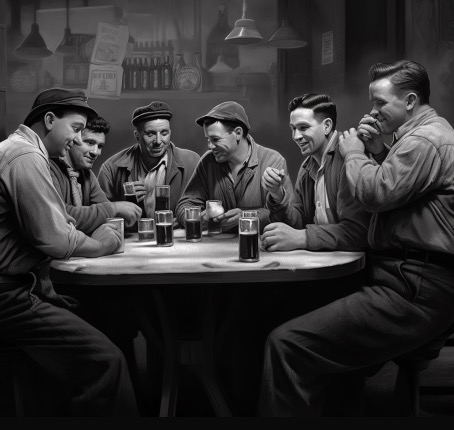
Bass, meanwhile, is known for its distinct hoppy flavor and was brewed in England since the 18th century. And Beck’s, while not as historically significant, also became known for its crisp taste and high quality.
These three beers stood out from the pack and have managed to maintain their popularity through the years, even as tastes and trends have shifted. To me, that’s a testament to the enduring appeal of a well-crafted and distinctive brew.
How these brands have maintained their popularity
I have always been fascinated by the enduring popularity of Guinness, Bass, and Beck’s, and how these brands have managed to maintain their popularity over the years. After all, with so many new beers hitting the market every year, it can be hard for any brand to stand out.
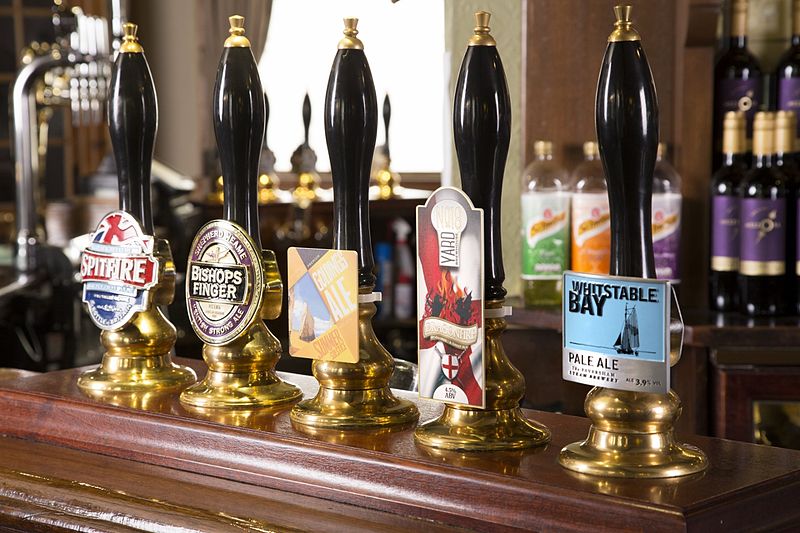
But what I’ve learned is that these brands have succeeded by staying true to their unique flavor profiles and by cultivating a sense of loyalty among their fans. For example, Guinness has always been known for its rich, creamy texture and its deep, complex flavor.
And this classic stout has remained popular by continuing to invest in quality ingredients and by appealing to consumers who appreciate its distinctive taste. Similarly, Bass and Beck’s have managed to stay relevant by emphasizing their unique flavor profiles and by cultivating a dedicated fan base.
Whether it’s the crisp, refreshing taste of Beck’s or the smooth, malty flavor of Bass, these brands have managed to build lasting relationships with their customers and to remain popular year after year.
Overall, I think it’s a testament to the enduring power of great branding and quality craftsmanship, and I look forward to seeing how these brands continue to evolve in the years to come.
6. Mild beers from Green King, Watneys, and Courage
As I delve further into the history of beer in the 50s, I can’t help but take note of the popularity of mild beers from Green King, Watneys, and Courage. These breweries were among the many that offered mild, a beer that was favored for its low alcohol content and smooth taste.
It’s interesting to see how these mild beers were just as important as the more well-known brews like Guinness, Bass, and Beck’s. I appreciate the variety that these mild beers brought to the beer scene, and it’s refreshing to know that they were enjoyed as much as their more popular counterparts.
Cheers to Green King, Watneys, and Courage for bringing a different flavor to the table!
8. The popularity of bottled Brown Ale and Light Ale
One of my favorite things about the beer scene in the 1950s was the surge in popularity of bottled Brown Ale and Light Ale. These styles were long-time pub staples, but with the rise of bottled beer sales, they became even more popular.
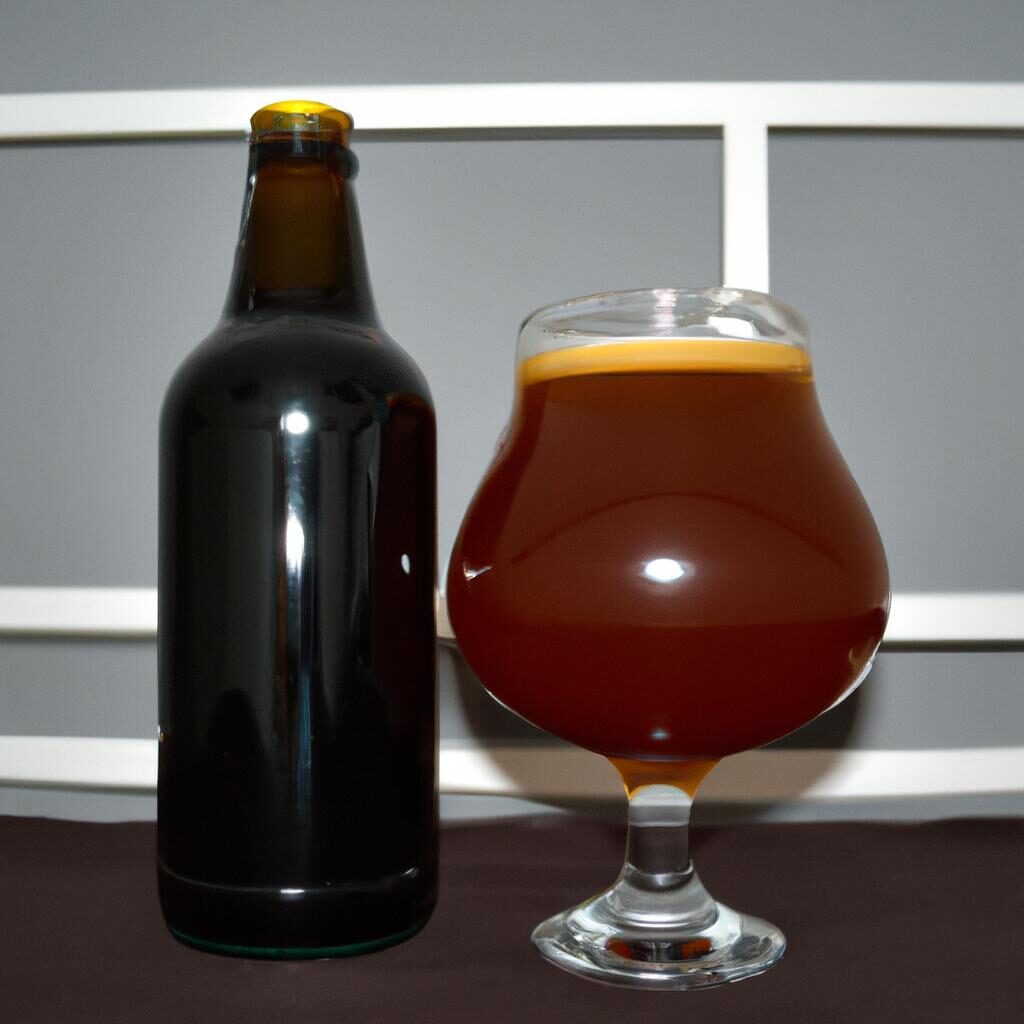
I love the mellow yet flavorful taste of a good Brown Ale, which can be reminiscent of the famous “Audit” Ales of bygone days.
And Light Ale, being lighter in gravity than Lager, was a refreshing and easy-drinking option. It’s always exciting to see classic beer styles remain relevant and enjoyed by new generations, and I’m grateful for the breweries like Green King, Watneys, and Courage that kept these styles alive in the 50s.
Plus, with so many other great beer options available, it’s amazing that Brown and Light Ale still held their own in terms of popularity. Cheers to the simple yet satisfying pleasures of a good bottle of ale.
10. The popularity of Canadian beers like Carling’s Red Cap and Old Vienna, and beers like Goebel and Ballantine.
Ah, the Canadian beers of the 50s! It’s hard not to get nostalgic thinking about Carling’s Red Cap and Old Vienna, and even the cheap options like Goebel and Ballantine. These beers were popular for a reason – they were tasty and easily accessible.
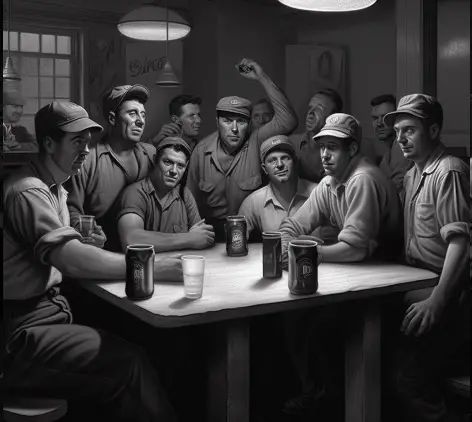
But what’s even more interesting is how these Canadian brands have stood the test of time. They may not be as dominant as they once were, but there’s still a loyal following for these classic brews. And let’s not forget about the rise of Ballantine IPA – a true trailblazer in the world of beer. It’s fascinating to see how different breweries have come and gone over the years, but certain brands like Guinness, Bass, and Beck’s have maintained their popularity.
Cheers to the beers of the past and present!

